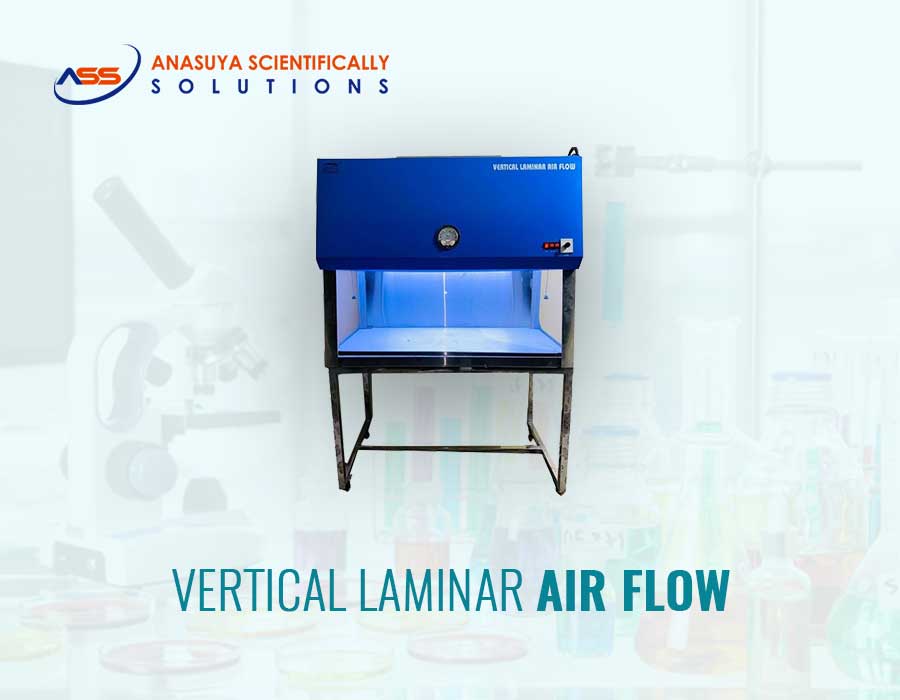Our vertical laminar air flow has vertical direction flow and particle retention above 0.5 micron.
These are appreciated for their low noise and versatile usage. These have been designed with latest technology and can also be designed as per the specifications, provided by our clients.
Application : The vertical laminar air flow cabinets is designed to provide a high degree of protection for process products In laboratories and production facilities. Many critical applications in the medical, pharmaceutical, nuclear-power, and micro electronic fields demand an ultra-clean work environment which is free from biological and particulate contamination.
Operation : Ambient Air is draw in through pre-filter and is introduced in the work zone through the HEPA filter. The average velocity in the work zone is maintained between 0.4 and 0.5 m/s. Air cleanliness in the work zone is better than class 3.5 (100) in accordance with US FED STD 209 E
Construction : The cabinets are fabricated out of thick board duly sunmica clad or mild steel cabinet duly epoxy coated. The work table is made of thick board which is sunmica clad at top or S. S Table top will be provided as optional accessories. All joints are sealed with silastic sealant. Side panels are provided of thick transparent acrylic sheets.
The unit is fitted with pre-filter and is made to pass through highly effective HEPA (High Efficiency Particular Air) filter having efficiency rating as high as 99.997% with hot, DOP, thus retaining all airborne particles of size : 0.3 micron and larger. Using a dynamic machine, the blower and motor assembly is statically and dynamically balanced. Blowers are mounted on vibration isolation mounts to minimize vibration. The working is illuminated by fluorescent lightings fitted to the unit. Height of the working table provides comfortable “ Sit Down” working position for the operation to work on 220/230 volts AC. supply.
| Standard Sizes | |
|---|---|
| Air Velocity | Between 0.4 to 0.5 mls +-20% |
| HEPA Efficiency Pre-filter | 99.997% at 0.3 microns with DOP test Washable with an arrestance up to 90% at 5 microns Less than 65 dB (A) |
| Sound Level | Lux 900 - 1300 Lux |
| Light Intensity Cleanliness | Standard 209 E Class 100 |
| Federal Power Supply | 220 V Single phase 50 Hz |


